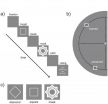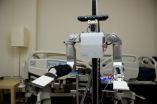(Press-News.org) MINNEAPOLS / ST. PAUL (March 9, 2011) – University of Minnesota researchers are using salmonella – the bacteria commonly transmitted through food that sickens thousands of U.S. residents each year – to do what was once unthinkable: help people.
U of M Masonic Cancer Center researchers believe salmonella may be a valuable tool in the fight against cancer in organs surrounding the gut – such as the liver, spleen, and colon – since that's where salmonella naturally infects the body.
Researchers want to "weaponize" salmonella, allowing the bacteria to then attack cancer cells in its natural environment.
Trials in animals have already shown salmonella can successfully controlled tumors in the gut. Human clinical trials are already underway at the U of M and are showing promise.
"Many bacteria and viruses - even harmful ones - can be used to fight disease," said Edward Greeno, M.D., lead researcher on the clinical study and Medical Director of the Masonic Cancer Clinic. "We believe it may even be possible to use bacteria to fight cancer."
Scientists have known for centuries that cancer patients sometimes get better after they've been exposed to an infection. For example, Greeno said, there is a published Austrian report from the 1860's on a patient with a large tumor. The patient was placed in the same room as another sick patient with a bad infection. Soon, the tumor became infected and began to shrink in the original patient and nearly disappeared.
Unfortunately, the infection also killed the patient with the tumor.
So the key for this research initiative, Greeno said, was to find a way to get the tumor fighting abilities of salmonella delivered to the patient - without making the patient sick.
What they came up with:
Greeno's Medical School colleague, Dan Saltzman, M.D., Ph.D., genetically modified a batch of salmonella to weaken it and added Interlueken 2, or IL-2. "You could think of IL-2 as a guard dog that sniffs around looking for threats inside the body." he said. When it finds one, it calls in an attack by the immune system.
Researchers knew if they could make IL-2 near tumors, it would identify the cancerous cells as a threat and trigger an immune response near the tumor.
Salmonella naturally finds its way to a person's gut and associated tissues. Salmonella also naturally likes to grow inside of tumor cells. Hence, if you're looking for ways to treat cancer in the bowels, the nearby lymph nodes or the liver - salmonella is a perfect method to deliver a package of IL-2.
In a nutshell, by using genetically modified salmonella packaged with IL-2, Medical School researchers have created a kind of two-prong attack on cancer – the immune response called in by IL-2, and the salmonella itself. The therapy is administered simply – mixed with a few ounces of water and imbibed orally.
"This probably won't replace other ways of treating cancer such as chemotherapy and radiation," Greeno said. "But it's a promising area of study and we hope it can be a potent tool in our battle against cancer. It also has potential to be a much cheaper and less toxic alternative to chemotherapy and radiation."
###
The study is funded by the National Institutes of Health, the Masonic Cancer Center and Botanic Oil Innovations.
U of M researchers using salmonella to fight cancer
Human clinical trials are underway in patients with cancer of the gut
2011-03-10
ELSE PRESS RELEASES FROM THIS DATE:
Baby stars born to 'napping' parents
2011-03-10
Cardiff University astronomers believe that a young star's long "napping" could trigger the formation of a second generation of smaller stars and planets orbiting around it.
It has long been suspected that the build up of material onto young stars is not continuous but happens in episodic events, resulting in short outbursts of energy from these stars.
However, this has been largely ignored in models of star formation.
Now, by developing advanced computer models to simulate the behaviour of young stars, Cardiff University Astrophysicists Dr Dimitris Stamatellos and ...
Aspirin's ability to protect against colorectal cancer may depend on inflammatory pathways
2011-03-10
The reduced risk of colorectal cancer associated with taking aspirin or other nonsteroidal anti-inflammatory drugs (NSAIDs) may be confined to individuals already at risk because of elevations in a particular inflammatory factor in the blood. In a paper in the March issue of Gastroenterology, investigators from Massachusetts General Hospital (MGH) and Dana-Farber Cancer Institute report finding that higher baseline levels of a novel inflammatory marker indicated increased risk of developing colorectal tumors and also predicted who might benefit from taking aspirin or NSAIDs. ...
Which side of the brain rotates a mental picture?
2011-03-10
Milan, Italy, 9 March 2011 – Consider the simple situation in which you are walking around the kitchen and decide to pick up your own cup of tea, which is identical to others lying on the table. Your brain chooses the correct cup of tea by using different types of information that you have stored about the position of the cup in relation to the kitchen table. The information can be represented in qualitative terms (left, right, above, below) or quantitative terms (distances and angles). Previous studies have claimed that the brain's left hemisphere is critical for processing ...
How do we combine faces and voices?
2011-03-10
Milan, Italy, 9 March 2011 – Human social interactions are shaped by our ability to recognise people. Faces and voices are known to be some of the key features that enable us to identify individual people, and they are rich in information such as gender, age, and body size, that lead to a unique identity for a person. A large body of neuropsychological and neuroimaging research has already determined the various brain regions responsible for face recognition and voice recognition separately, but exactly how our brain goes about combining the two different types of information ...
Alcohol abuse history influences quality of life following liver transplant
2011-03-10
A history of alcohol abuse significantly impacts quality of life for patients after liver transplant, according to researchers at Henry Ford Hospital.
"Transplant recipients with alcoholic cirrhosis experienced less improvement in physical quality of life and reported greater pain and physical limitations than non-alcoholics after transplant surgery," says Anne Eshelman, Ph.D., Henry Ford Behavioral Health Services, lead author of the study.
"Understanding alcoholic and nonalcoholic patients' post-transplant change in quality of life may assist in treatment planning. ...
EU tariffs obstacle to trade with the rest of the world
2011-03-10
Increased imports often mean cheaper products for EU consumers and greater opportunities for producers in other countries to export their products, but also increased competition for EU producers.
"I have compared various product groups and found that the effects of a reduction in tariffs would be different for fruit and vegetables and for cereals", says Cecilia Hammarlund, who is behind the report Handel med hinder – effekter av tullar på EU:s jordbruksimport (Trade with obstacles – effects of tariffs on EU agricultural imports).
The study shows that an average reduction ...
Redefining normal blood pressure
2011-03-10
As many as 100 million Americans may currently be misclassified as having abnormal blood pressure, according to Dr. Brent Taylor from the Veterans Affairs Health Care System in Minneapolis and the University of Minnesota and his colleagues. Their findings1 show that these people are not actually more likely to die prematurely than those with 'normal' blood pressure, i.e. below 120/80. Taylor and colleagues' article in the Journal of General Internal Medicine², published by Springer, also shows that in those under 50, diastolic blood pressure* is the more important predictor ...
Learning to see consciously
2011-03-10
Our brains process many more stimuli than we become aware of. Often images enter our brain without being noticed: visual information is being processed, but does not reach consciousness, that is, we do not have an impression of it. Then, what is the difference between conscious and unconscious perception, and can both forms of perception be changed through practice? These questions are important not only for basic research, but also for the treatment of patients with perceptual deficits due to brain lesions e.g. following a stroke. Scientists at the MPI for Brain Research ...
How do people respond to being touched by a robot?
2011-03-10
For people, being touched can initiate many different reactions from comfort to discomfort, from intimacy to aggression. But how might people react if they were touched by a robot? Would they recoil, or would they take it in stride? In an initial study, researchers at the Georgia Institute of Technology found people generally had a positive response toward being touched by a robotic nurse, but that their perception of the robot's intent made a significant difference. The research is being presented today at the Human-Robot Interaction conference in Lausanne, Switzerland.
"What ...
Toward real time observation of electron dynamics in atoms and molecules
2011-03-10
Quebec City, March 9, 2011 – Another step has been taken in matter imaging. By using very short flashes of light produced by a technology developed at the national infrastructure Advanced Laser Light Source (ALLS) located at INRS University, researchers have obtained groundbreaking information on the electronic structure of atoms and molecules by observing for the first time ever electronic correlations using the method of high harmonic generation (HHG). Made by a team of researchers from the Energy, Materials, and Telecommunications Center of INRS and the National Research ...
LAST 30 PRESS RELEASES:
Making lighter work of calculating fluid and heat flow
Normalizing blood sugar can halve heart attack risk
Lowering blood sugar cuts heart attack risk in people with prediabetes
Study links genetic variants to risk of blinding eye disease in premature infants
Non-opioid ‘pain sponge’ therapy halts cartilage degeneration and relieves chronic pain
AI can pick up cultural values by mimicking how kids learn
China’s ecological redlines offer fast track to 30 x 30 global conservation goal
Invisible indoor threats: emerging household contaminants and their growing risks to human health
Adding antibody treatment to chemo boosts outcomes for children with rare cancer
Germline pathogenic variants among women without a history of breast cancer
Tanning beds triple melanoma risk, potentially causing broad DNA damage
Unique bond identified as key to viral infection speed
Indoor tanning makes youthful skin much older on a genetic level
Mouse model sheds new light on the causes and potential solutions to human GI problems linked to muscular dystrophy
The Journal of Nuclear Medicine ahead-of-print tip sheet: December 12, 2025
Smarter tools for peering into the microscopic world
Applications open for funding to conduct research in the Kinsey Institute archives
Global measure underestimates the severity of food insecurity
Child survivors of critical illness are missing out on timely follow up care
Risk-based vs annual breast cancer screening / the WISDOM randomized clinical trial
University of Toronto launches Electric Vehicle Innovation Ontario to accelerate advanced EV technologies and build Canada’s innovation advantage
Early relapse predicts poor outcomes in aggressive blood cancer
American College of Lifestyle Medicine applauds two CMS models aligned with lifestyle medicine practice and reimbursement
Clinical trial finds cannabis use not a barrier to quitting nicotine vaping
Supplemental nutrition assistance program policies and food insecurity
Switching immune cells to “night mode” could limit damage after a heart attack, study suggests
URI-based Global RIghts Project report spotlights continued troubling trends in worldwide inhumane treatment
Neutrophils are less aggressive at night, explaining why nighttime heart attacks cause less damage than daytime events
Menopausal hormone therapy may not pose breast cancer risk for women with BRCA mutations
Mobile health tool may improve quality of life for adolescent and young adult breast cancer survivors
[Press-News.org] U of M researchers using salmonella to fight cancerHuman clinical trials are underway in patients with cancer of the gut

